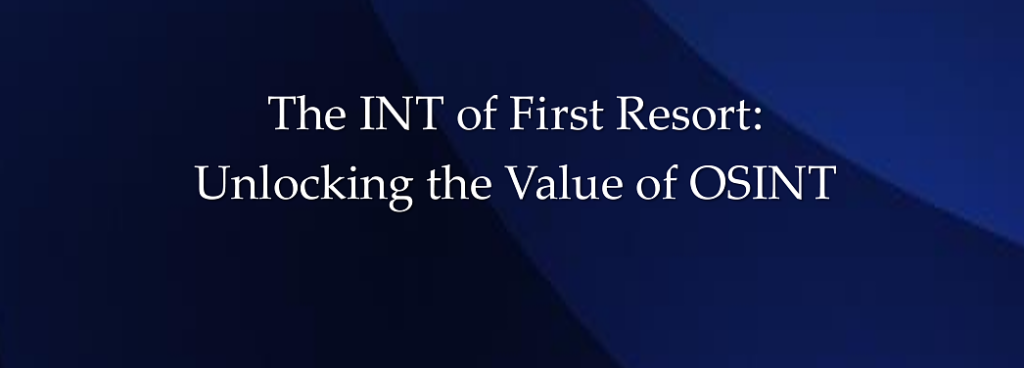Bootcamp and the Government’s OSINT strategy

Ethical Stalking for Government Contractors® Bootcamp is the flagship education and training program of The ASBC. It’s been that way since 2009. As we continue to build it to serve the evolving needs of today’s federal contractors, we always take note of processes and controls that resonate. A very recent example of this is The IC OSINT Strategy from the Director of National Intelligence.
It begins like this:
OSINT is vital to the Intelligence Community’s Mission. OSINT both enables other intelligence collection disciplines and delivers unique intelligence value of its own, allowing the IC to more efficiently and effectively leverage its exquisite collection capabilities. As the open source environment continues to expand and evolve at breakneck speed, the ability to extract actionable insights from vast amounts of open source data will only increase in importance.
This sentiment is a bullseye for us, the creators and facilitators of Ethical Stalking for Government Contractors, because it is quite literally why we created the program in the first place. It’s about developing the ability to find information that enriches what you already know. It’s knowing where to look for it, having context for it, and incorporating it into decision-making to get better results. Our Bootcamp program is based on leveraging Open Source Intelligence to gain a competitive edge. So let’s talk about what this means.
What is Open Source Intelligence?
According to the Director of National Intelligence (DNI), Open Source Intelligence (OSINT) is intelligence derived exclusively from publicly or commercially available information that addresses specific intelligence priorities, requirements, or gaps.
As far back as I can remember, including my earliest years before the World Wide Web was as accessible and robust as it is today, there have been purveyors of information in federal contracting. Some of them were consultants, while others were aggregators. One used by companies I worked for in the early 1990’s was INPUT known today as Deltek GovWin. The information we received from INPUT was via mail, fax, and in-person events, primarily. The product purchased was a collection of Open Source Intelligence gathered from an array of sources using tactics of the day such as phone calls, meetings, and FOIA requests by mail and by fax. The objective was to accumulate as much worthwhile information as possible, enriching all of it by mashing it together.
Here comes the rub.
Collection of information by these consultants and aggregators is not standardized. Neither is how the information is interpreted and presented in visualization. This means the original intent of the information may get lost, literally in translation. We see this all too often for the simple reason most folks don’t have context of the data elements and terminologies in systems like the Federal Procurement Data System. And since that engine feeds many other engines, both Government and third-party vendors, the partial and total lack of understanding continues to take its toll.
Interestingly, as the Intelligence Community strives to better its use of OSINT, the INT of First Resort, especially in light of new tools like generative artificial intelligence (GAI), a word of caution emanates.
The growth of generative artificial intelligence (GAI) presents both opportunities and risks for OSINT tradecraft. GAI can be a powerful tool to enable timely and insightful OSINT production, including by aiding the identification of common themes or patterns in underlying data and quickly summarizing large amounts of text. At the same time, OSINT tradecraft and training must be updated and refined to mitigate the potential risks of GAI, including inaccuracies and hallucinations.
Even before AI, we’ve seen companies rush to employ solutions for collecting and utilizing OSINT, without having the fundamental understanding of the very information they were collecting. Can you use something without understanding it? For sure, it happens all the time. Can you count on achieving the results you want this way? Even a broken clock it right twice per day, right?
The point is this. Via engines like Google, we all have access to more information than we could ever use. The question is, what pieces of that information actually matter? Buying market and competitive intelligence does not convey the ability to use that information in a way that helps you. This requires context, and that’s something you’ll get as a Bootcamp attendee and Bootcamp Alumni. This means you’ll know where to get information you need, know what it means, and know how to use that information to support your decision-making. Knowledge is power, and you’ll get plenty of it at Bootcamp. I hope to see you there.
Peace, Health, and Knowledge,
Go-To-Guy Timberlake
For a PDF version of this blog, click here.